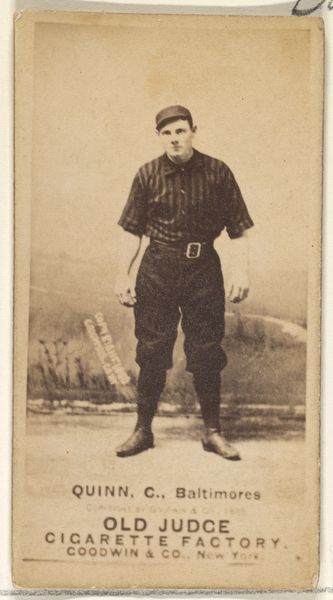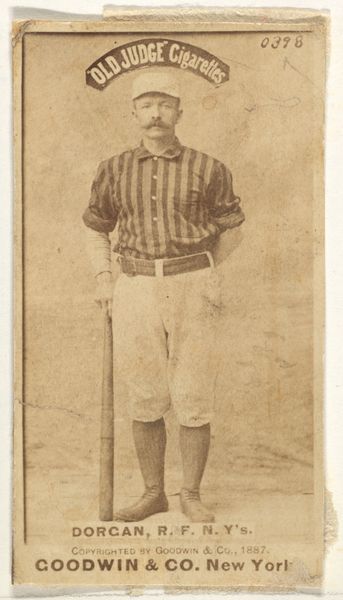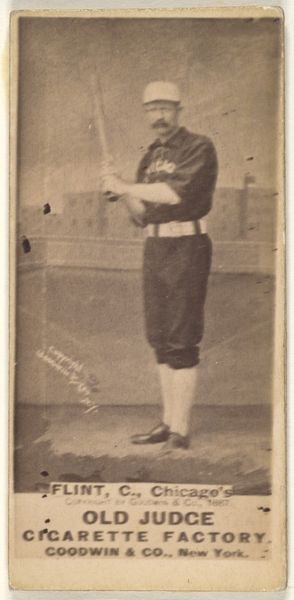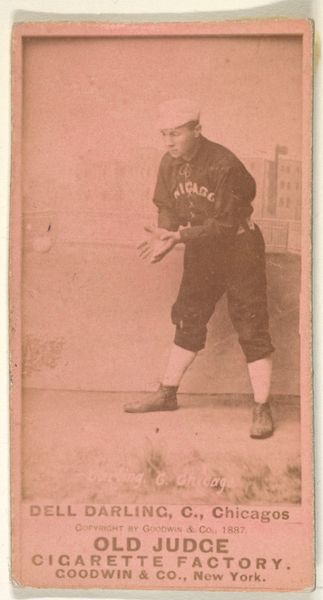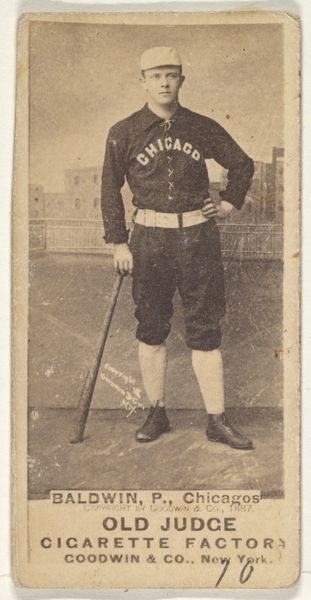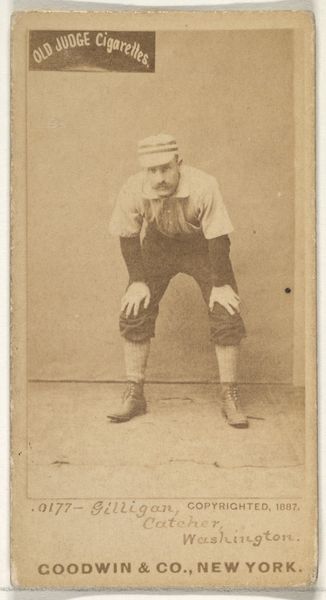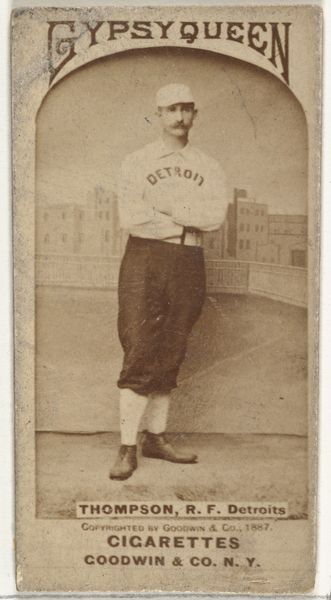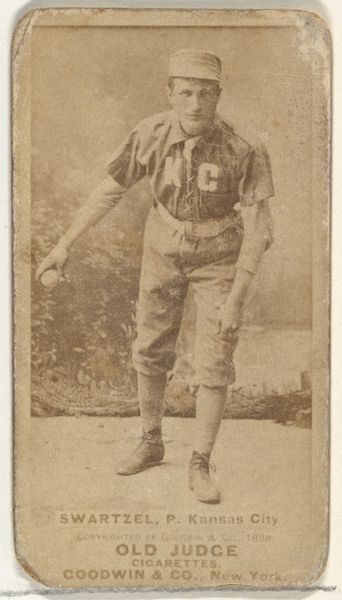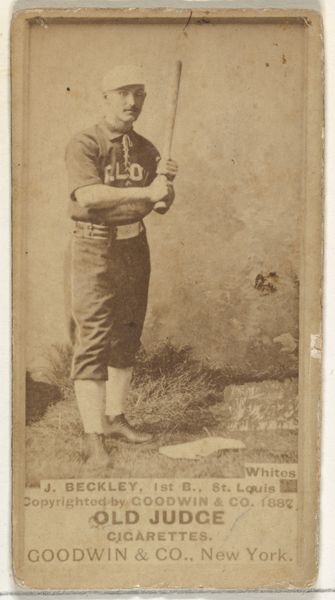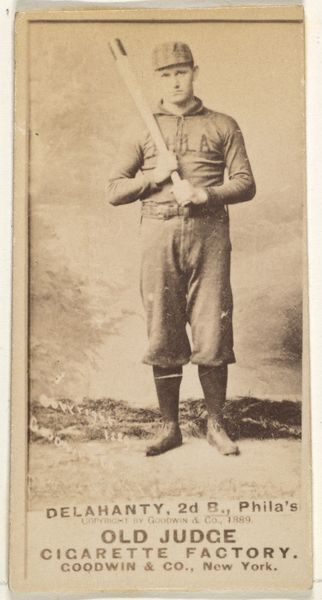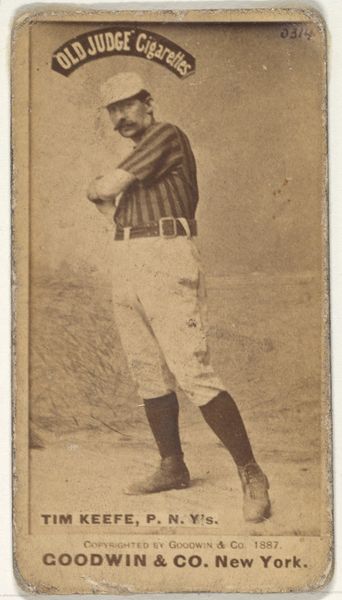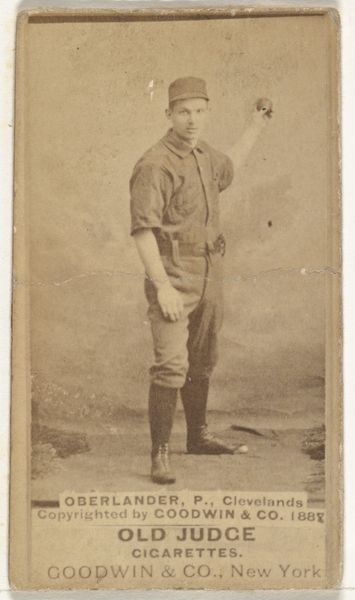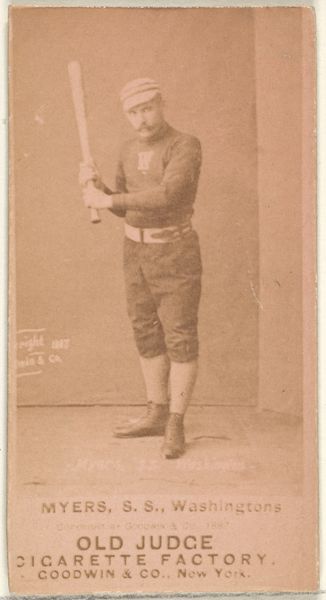
George W. Shafer, Right Field, Des Moines Prohibitionists, from the Old Judge series (N172) for Old Judge Cigarettes 1888
0:00
0:00
drawing, print, photography, gelatin-silver-print, albumen-print
#
portrait
#
drawing
#
toned paper
#
16_19th-century
#
photo restoration
# print
#
baseball
#
photography
#
historical photography
#
framed image
#
gelatin-silver-print
#
19th century
#
men
#
athlete
#
albumen-print
Dimensions: sheet: 2 11/16 x 1 3/8 in. (6.9 x 3.5 cm)
Copyright: Public Domain
Curator: Take a look at this compelling gelatin silver print, "George W. Shafer, Right Field, Des Moines Prohibitionists," part of the "Old Judge" series from 1888. It was made for Old Judge Cigarettes. What are your first impressions? Editor: He looks so self-assured, doesn't he? Imposing. It's a portrait, yes, but he's not revealing much. The image has this wonderful sepia tone—it speaks to the passage of time. I wonder about the relationship between celebrity and commerce. Curator: Well, these cards were commercial products distributed with cigarettes. That makes them fascinating documents of early consumer culture and image-making. The albumen and gelatin silver printing process was very popular, it allowed for mass production and crisp detail. Consider the means: photography reproduced as affordable, collectible items alongside another commodity. Editor: Exactly! Think about how the labor involved in baseball card production links to broader patterns of late 19th-century labor and leisure. He represents a shift – baseball rising as a working-class diversion that itself then became a source of industrial and consumer growth. Shafer's stoic pose then embodies the labor class trying to acquire the veneer of professional. The Prohibitionists weren't even major league. Curator: Absolutely, we also have to acknowledge Goodwin & Company’s own place in all this, right? What kind of wages and labor practices were behind this boom in the printing business at the end of the 1800s? It would be fascinating to contextualize how those cards and baseball-related commodities were distributed and sold in immigrant communities, or even specifically for consumption in or as a way to address changing norms of masculinity. Editor: These images construct narratives of the All-American man, typically excluding people of color from these narratives of celebrity. As well, they contribute to the cultural phenomenon that baseball was tied up with American nationalism from almost its start. Curator: You make a good point! So by looking at it this way, the commercial origin reveals larger economic systems. Thinking about all the points raised, perhaps this card asks us about identity. What labor practices were involved in its creation? Editor: I see now a web of interconnected histories around class, race, and the early culture industry.
Comments
No comments
Be the first to comment and join the conversation on the ultimate creative platform.
